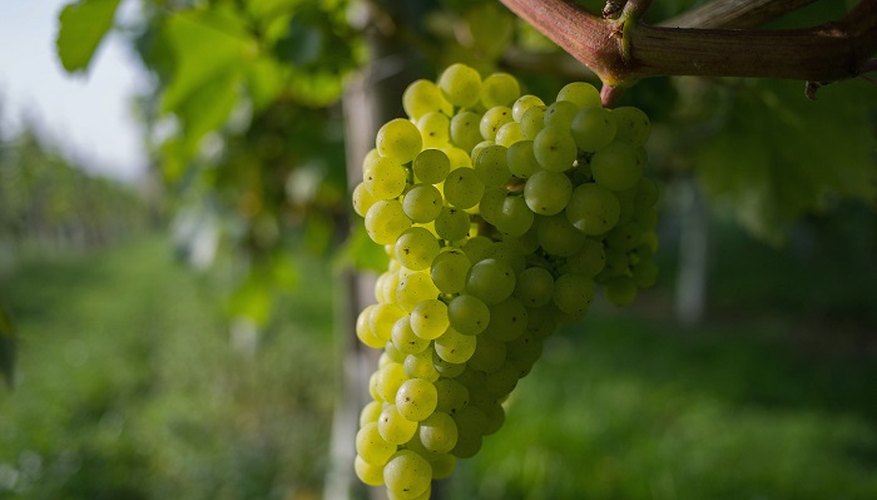Grapevines thrive in warm areas with full sunlight exposure, such as sunny south-facing slopes in the southern half of the UK. Improper cultural practices make the plants susceptible to fungal diseases that thrive in wet conditions. Although prevention is a better idea, control through regular fungicide applications keeps the entire vine from turning brown and rendering the crop useless.
Cane and phomopsis leaf spot
Caused by the Phomopsis viticola fungus, cane and phomopsis leaf spots occur during wet, rainy and cool weather. The fungus overwinters in canes and infects new leaves in spring. Symptoms include spots on lower leaves and canes, stem clusters and petioles exhibit elongated, brown lesions measuring around 600 mm in length. Treat the infected grapevine parts with a licenced fungicide.
- Caused by the Phomopsis viticola fungus, cane and phomopsis leaf spots occur during wet, rainy and cool weather.
- The fungus overwinters in canes and infects new leaves in spring.
Downy mildew
Caused by the fungus Plasmopara viticola, downy mildew is a serious grape disease causing severe crop loss if untreated. The spores overwinter in diseased leaves on the ground and spread in spring through rain or irrigation water. Initial symptoms include tiny, yellow lesions and spots on leaves. If left untreated, the spots cover the entire leaf surface, turning the leaf brown and withering it. The lower sides of leaves have a grey or white growth, and cane tips may appear twisted. Again, treat the disease with fungicide.
- Caused by the fungus Plasmopara viticola, downy mildew is a serious grape disease causing severe crop loss if untreated.
- The spores overwinter in diseased leaves on the ground and spread in spring through rain or irrigation water.
Black rot
Caused by the Guignardia bidwellii fungus, black rot is a common disease in some parts of the world but less common in the UK. Symptoms include 400 mm to 600 mm wide black or brown lesions on the foliage. Developing fruit wilts and falls prematurely. Treating grapevines with foliar sprays controls black rot disease.
- Caused by the Guignardia bidwellii fungus, black rot is a common disease in some parts of the world but less common in the UK.
- Treating grapevines with foliar sprays controls black rot disease.
Heatwave
Although grapevines thrive in warm areas, a prolonged heatwave coupled with scarce water stresses the plant, causing the foliage to shrivel and droop. If high temperatures continue and irrigation or rainfall water remain insufficient, the leaves turn brown and the canes shrivel and dry. Provide young grapevines with 2.5 cm of water every week during the spring and summer, and mature grapevines 32 litres of water during summer fruiting. After the grapevines finish flowering, provide the plants with 18 litres of water every four days. During the winter, water the grapevines when the top 6 cm of soil feels dry.
- Although grapevines thrive in warm areas, a prolonged heatwave coupled with scarce water stresses the plant, causing the foliage to shrivel and droop.
- Provide young grapevines with 2.5 cm of water every week during the spring and summer, and mature grapevines 32 litres of water during summer fruiting.
Considerations
Grow the plants in well-draining soil with good air circulation. Removing plant debris from around the vines prevents fungi from overwintering. Pruning the plants annually controls growth and size. Using a soaker hose for irrigation prevents wetting the foliage.
- Grow the plants in well-draining soil with good air circulation.
- Removing plant debris from around the vines prevents fungi from overwintering.
